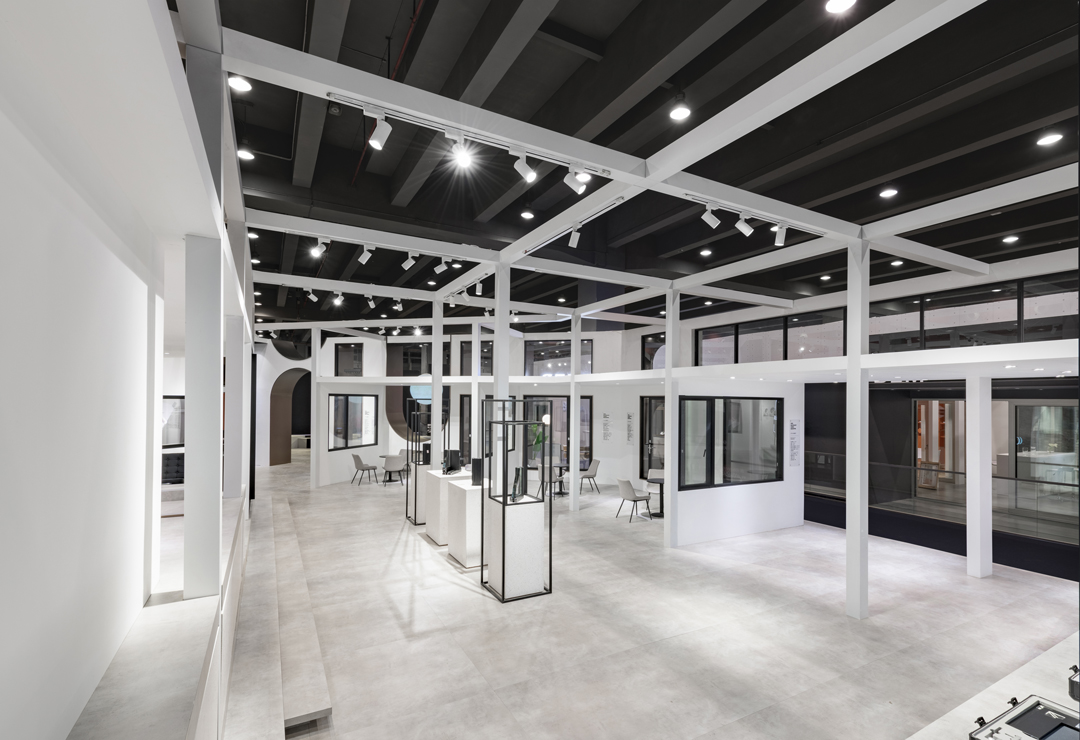Completion Year: 2019
Location: Guangzhou
Completion Year: 2019
Location: Guangzhou
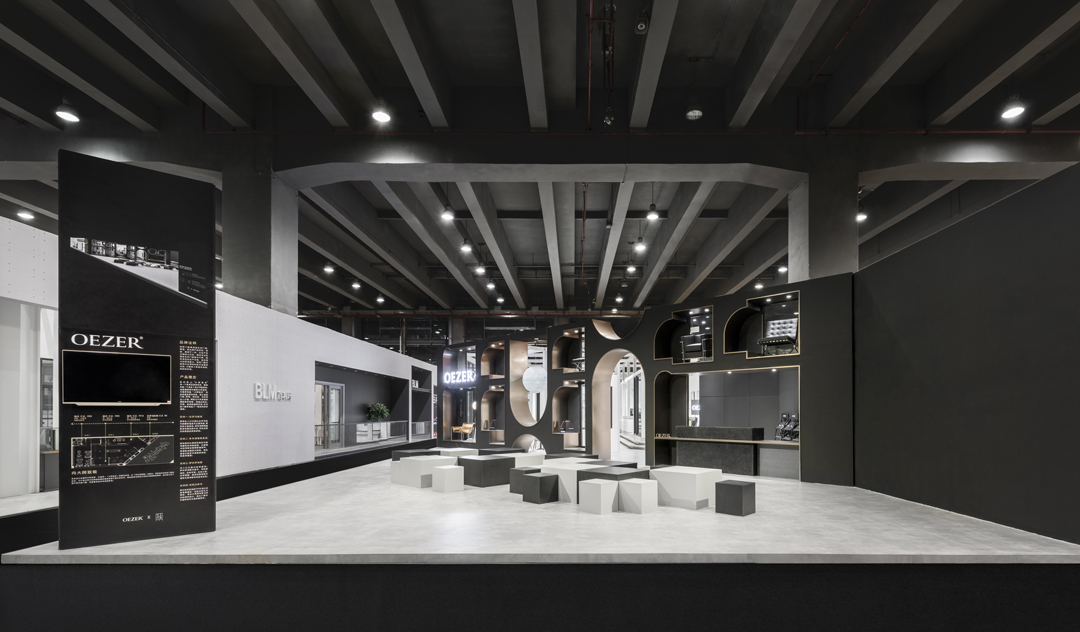
展會新型態-以空間營造多元交流新契機
New Paradigm of Exhibition – Spatiality Bringing New Opportunities for Diverse Exchanges
展示規劃專業過去曾為高專業度與稀有性物件演繹的平台,隨時代演進,當代的展場內容不再受限特定產物,多元化的主題、包羅萬象的展品,藉由設計與藝術的手法呈現,讓觀者在無形中感受品牌所欲傳遞的精神。本次在全球規模最大、品項最齊全的中國(廣州)建築裝飾博覽會中,我們以地景設計的理念顛覆傳統展示設計思維操作,在入口處退縮近1/3的面積,形塑一個可以吸納外部人流的緩衝廣場,一個內與外的共構空間,創造交流與對話的多樣可能。
The profession of exhibition planning was once an ideal platform of interpreting high profession and rare objects. As time evolves, the contemporary exhibition content is no longer limited to particular objects but embodied with diverse themes and products. , The kindred spirit of the brand are intangibly perceived by the beholders through design and art. In the world’s largest and comprehensive architecture and decoration EXPO in Guangzhou, China, the design team defies the conventional exhibition design by anchoring on landscape design with approximately one-third setback at the entrance to shape a transitional area, which absorbs the flow of visitors. It is a synergistic space of the interior and the exterior inundated with possibilities for exchanges and dialogues.
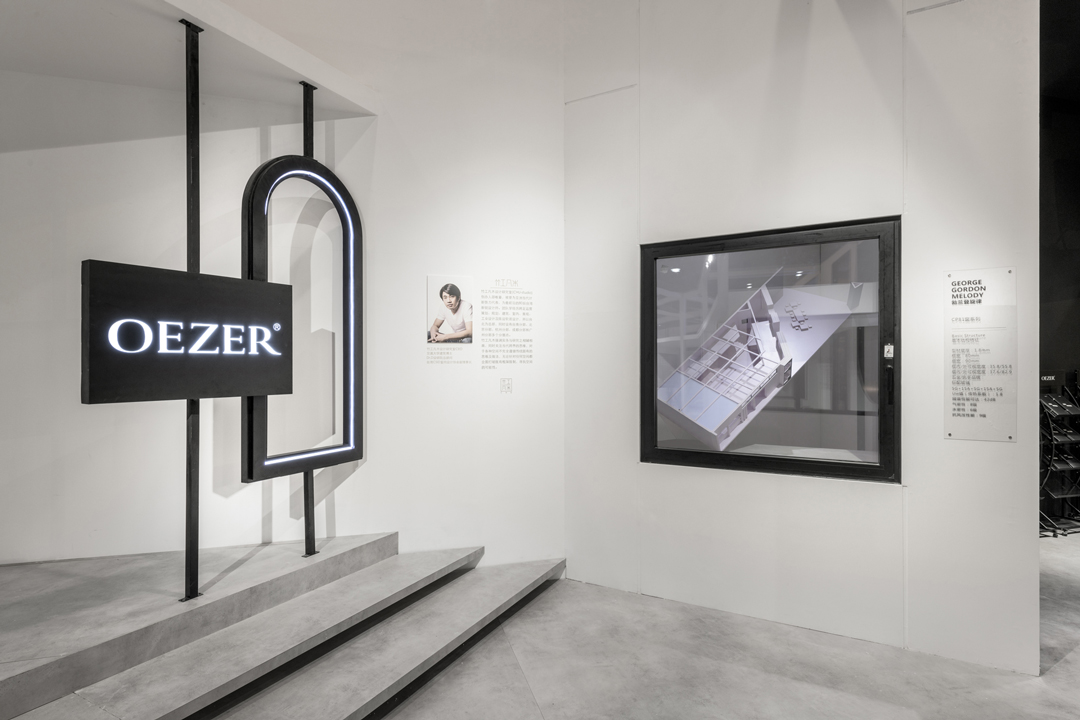
設計新物種-門窗的前世、今生與未來
New Paradigm of Design – The Past, Present, and Future of Doors and Windows
早在距今數千年前的古羅馬時代,建築便以佇立的長石柱與水平向的橫樑組成,受限於材料的延展性,人們應用「拱型力學」的原理分解建築承載的重量,並大量用於建築物的開口,呈現下大上小的門窗形式。直至現代主義興起,伴隨技術革新,門窗樣貌也出現新的變革,配合多米諾框架系統(Domino System)的樑柱結構解放建築立面,門窗的形式被模矩化。爾後又因高層建築與帷幕牆的出現,門窗使用材質更為豐富,品質與結構也持續提升,讓門窗呈現安全性、多樣性與系統化的特質。因應大數據時代的來臨,多元的使用者與生活方式讓門窗不再只是門窗,也不僅只是一種建築元素,而是一種生活方式的延展,門窗的自由不在只呈現於形式與結構上,而是一種生活方式的展現。
In the ancient Roman time, architecture is mainly composed of long masonry columns and horizontal-spanning beams. Due to the limitation of the masonry materials, the “Dynamic Arch” principle was introduced to address the loadbearing issues, which was utilized in many doors and window openings in buildings with top-narrow and bottom-wide design. As modernism emergence and technology revolution, the appearance of doors and windows has undergone new changes. The Domino System of column and beam structure liberates the elevation design of buildings; hence the doors and windows were subject to modularization. The material palette for doors and windows has expanded because of the emergence of high-rise buildings and curtain wall systems. The elevated quality and structure has optimized the safety, diversity, and systemization characteristics of doors and windows. Nowadays, in respond to the coming era of mega-data, various users and their living styles make differences to architecture design. Doors and windows are no longer conventional architectural elements but an extended articulation of our life style. The functional objectives of doors and windows are not merely shown in their formats and structures but a manifestation of a lifestyle.
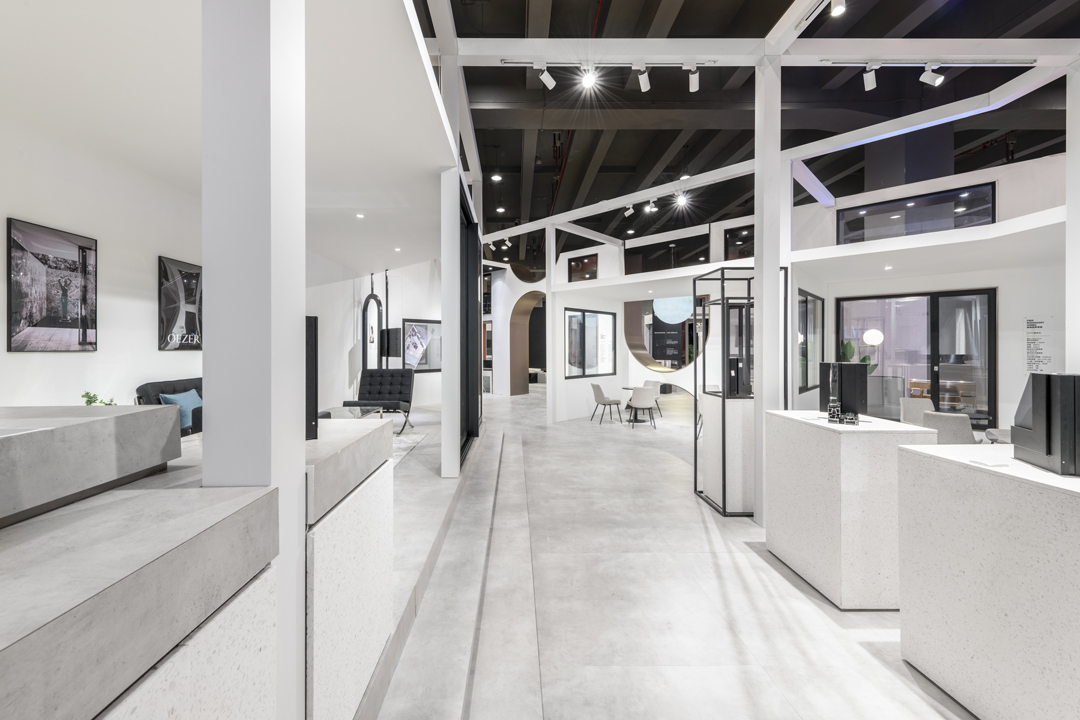
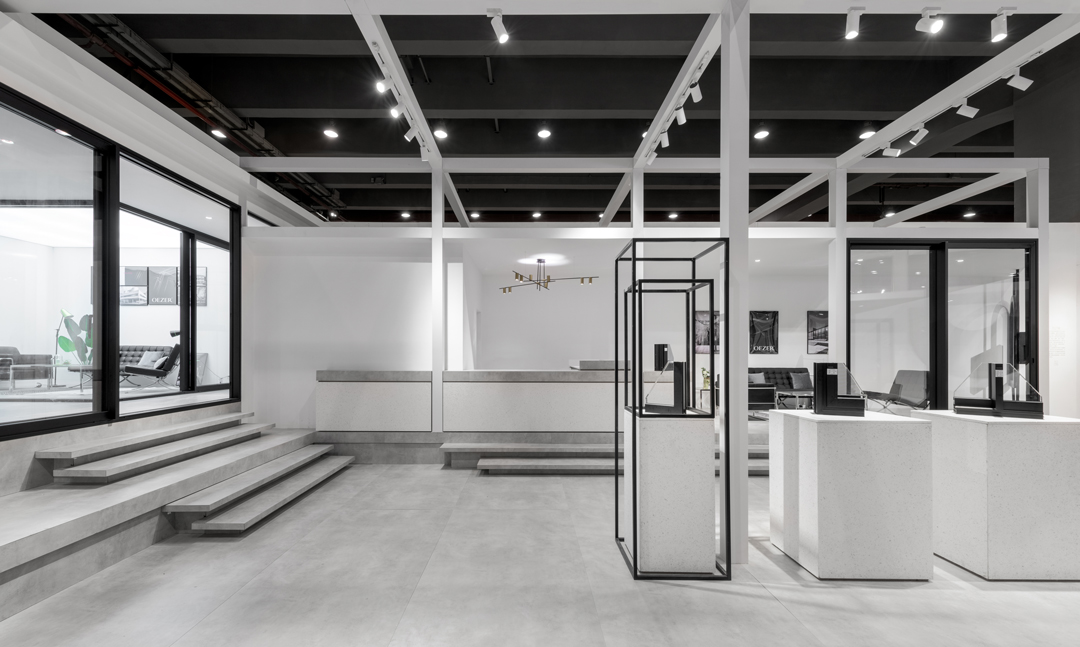
鑑古貫今-以經典建築語彙形構當代展示空間
Timelessness – Contemporary Exhibition in the Construct of Timeless Architectural Semantics.
由建築大師密斯.凡德羅(Mies van der Rohe)-少即是多(less is more)的理念出發,本次我們以「向大師致敬」的概念發想,由展場空間對應到門窗演化史的思維,將古羅馬建築、多米諾框架系統、薩伏伊別墅(Villa Savoye)、范斯沃斯宅(Farnsworth House)等四棟經典建築的構造形式再次體現,以強化OEZER品牌對於好設計的追求,還有與時代性接軌的企圖。展場主要立面以古羅馬時代的圓拱造型風格呈現,厚實的立面結構與黑色調搭配金色鑲邊的手法,營造厚實而穩重的典雅質感。展場室內由框架系統作為架構空間的基礎框架,大量細長柱列結合穿插其中的樓梯與隔間牆,形塑出仿若多米諾框架系統般的場域氛圍。次入口的立面則以現代主義建築大師勒.柯比意(Le Corbusier)設計的薩伏伊別墅為藍本,以致敬建築五原則的理念。展示空間底端的VIP區域,則以密斯.凡德羅的經典草原建築-范斯沃斯宅為設計原型,大面落地窗與陽台的簡約設計,強化門窗作為建築構件的重要性。透過四個不同區塊以歷時性的建築發展整合規劃思考,一方面以經典的空間語彙來回應門窗演進的進步精神,同時也帶出今日門窗不該再只是門窗,而著重在其未來性的哲學思考。
Based on the concept of “Less is More,” stated by Mies van der Rohe, the design team pays homage to the Masters. We re-present the classic architectural structure of ancient Roman architecture, Domino System, Villa Savoye, and Farnsworth House to optimize OEZER’s pursuit of immaculate design and connection with the Zeitgeist. The main elevation of solid elevation and golden-edging on black for the exhibition space is aligned with the theme of the round arch style of the ancient Roman time, which brings out a modest sense of timeless elegance. The fundamental frame system forms a spatial Domino-System-like ambiance by defining the interior spatiality with many slim colonnades among staircases and partition walls traverse. The elevation of the secondary entrance, based on Villa Savoye designed by Le Corbusier, pays homage his Fives Points of Architecture. The design of the VIP area at the bottom end of the exhibition space is based on Mies van der Rohe’s classic prairie architecture of Farnsworth House with the minimalist design features of large full-height windows and balconies to accentuate the significance of doors and windows as architectural components. Through the chronological accolade of four different architectural eras, timeless spatial semantics serves to reflect not just the on progressive spirits of the evolution of doors and windows but their transcending future as philosophical discourses in architecture design.
